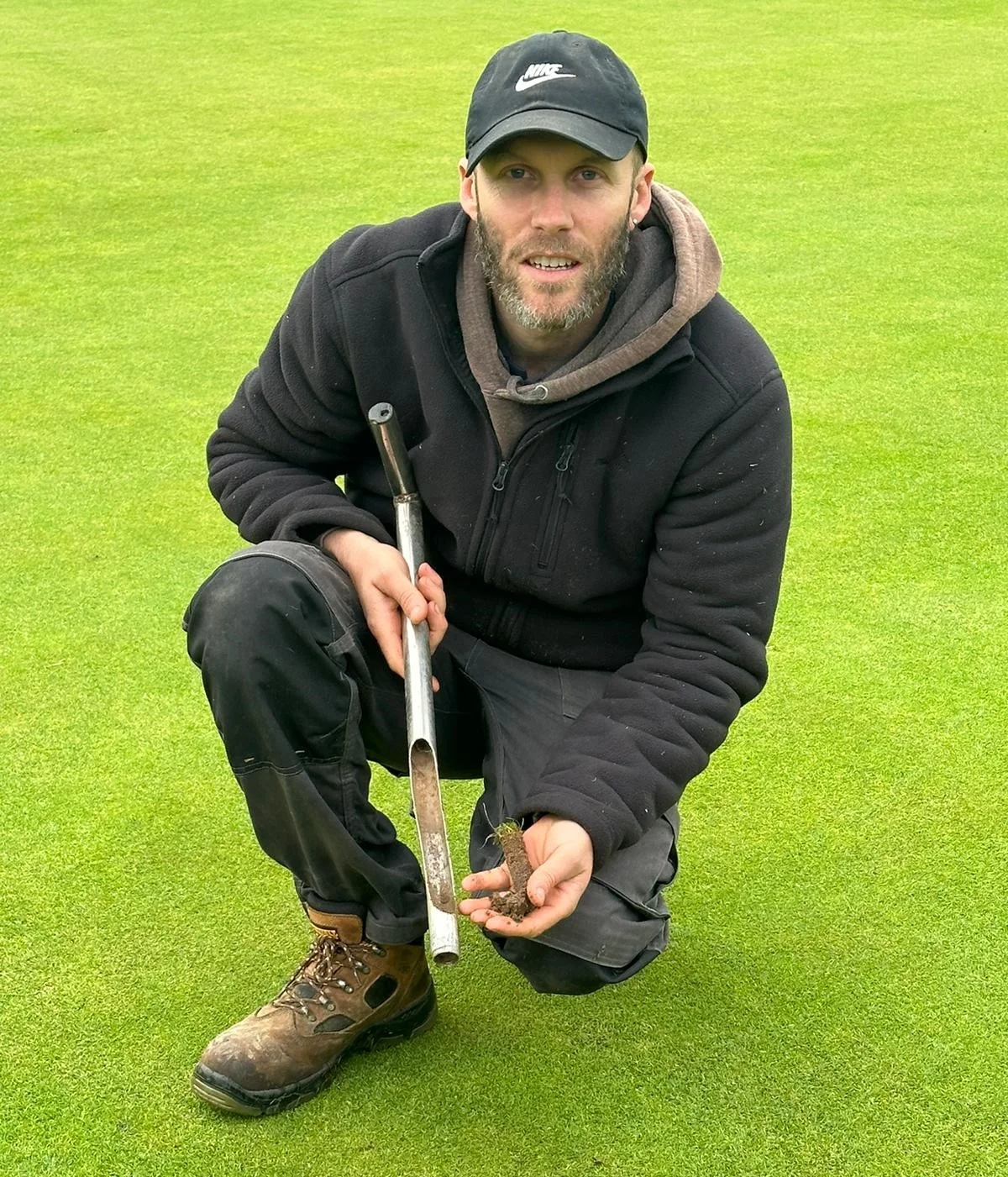A question and answer session with Head Greenkeeper Steve Young
Ask any group of golfers in the bar for their views on the course they have just played and you will get a whole range of answers. Bunkers, greens, tee boxes, rough, fairways, there will be opinions on them all.
But virtually none will have given a second thought to the work that goes on behind the scenes, day in day out, through all weathers, 365 days of the year, just to keep the course in the best possible condition.
The greenkeeping staff at Stoke are our unsung heroes on the frontline of the war against disease, extreme weather, animal damage and the continual growth of grass, weeds, bushes and trees.
We pinned down Head Greenkeeper Steve Young and asked him about some of the issues we have been facing and what his team are doing to keep pace.
Q. The last year has seen some of the most extreme weather anyone can remember at Stoke – and the courses have never been as wet for as long. How has this affected your work?
A. “The biggest single issue with the wet was our inability to get machinery on to the saturated courses. Not being able to get machines out pushed back almost everything in our programme of works. It meant we couldn’t get on with bunkers, it meant we couldn’t do what we wanted on the greens, the tees or even get out on the fairways most of the time.
“That sustained period of wet weather has pushed everything back for months, but we have been working really hard to catch up and I think with the warmer, relatively drier weather we are having now, we will get back to where we want to be very soon”.
Q. Let’s start with bunkers then. We have a total of 83 bunkers across the two courses. What is the plan to upgrade them and where are we now?
A. “The main issue we have with bunkers is that most of them have never been lined, so over time, rainfall has pushed the sand down into the soil or clay and stones come to the surface. They don’t drain well, so we are left with standing water which then effectively takes them out of play.
“Our programme, which will probably take three or four years to complete, is to systematically line all of the bunkers, add new drainage if we need to, and then re-fill the sand.
“We looked at a few different options for lining before we started and have settled on turf liners using a very particular type of turf which comes from the edges of fields on turf farms because it is very thatchy. By laying it upside down it beds in well, then we can re-sand. It has taken us a few months to finish all of the bunkers we started back in the winter, for various reasons including the fact that we had a major water leak behind the first Constable tee which affected our irrigation and we didn’t want to turf until we could irrigate. But all of the bunkers we started are now back in play and we are now looking at which ones to do next”.
Q. The source of probably most golfers’ complaints are the greens. What problems have you faced there and what is the current situation?
A. “I think everyone knows about our fight against Dollar Spot last year. Dollar Spot is a fungal disease and on the greens it looks just like unrepaired pitchmarks.
“It can start and spread very rapidly, and we can only treat it by spraying and re-seeding. The trouble was last year, that by the time we re-seeded, there was no growing season left and we had the scars all winter so it looked like we were not doing anything about it which was unfortunate.
“But once the growing season started again and the seeds started to come through the greens have slowly come back. We did have one instance of Dollar Spot a few weeks ago, but as soon as we identified it and treated it, we stopped it spreading.
“We have a lot of systems in place to monitor soil conditions, humidity, weather conditions, dew levels etc and I now get advance warnings when conditions are likely to throw up some of these diseases and we can act fast to prevent them”.
Q. What else are you doing to improve the greens?
A “We also have a programme of soil sampling where we take core samples from a number of greens and send them off for analysis on a regular basis. We have been doing that for a while now so we can monitor what is happening below the ground and know when we need to sclarify, when we need to aerate, when we need to hollow tine and so on.
“We are also actively trying to promote the growth of Bent grass over Meadow grass on the greens. Meadow grass is a good summer grass, but a bad winter grass as it is very susceptible to disease. Bent grass is better all round, requires less water and is more disease resistant.
Q. You are also working with the R and A agronomy team now, how is that working out?
A. “The R and A are very conscious about the environment and the long-term sustainability of golf courses, so working with them towards their 2030 Green Charter is a sensible thing to do. They come and visit us twice a year and we are taking their advice on lowering the use of chemicals and water usage to help the ecology and the environment and that can only be a good thing”.





